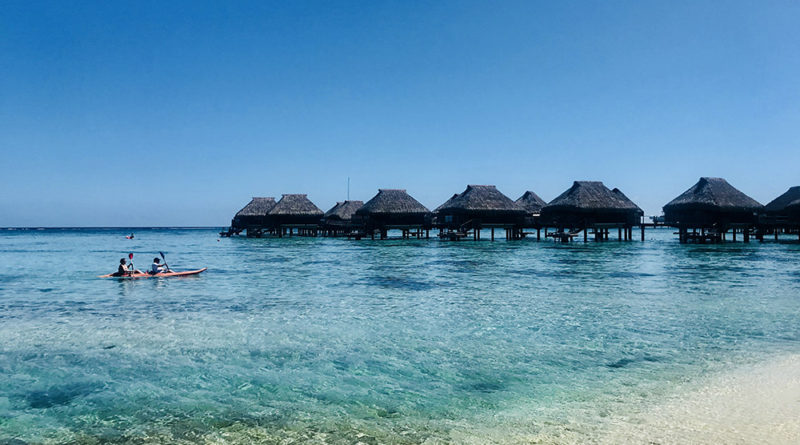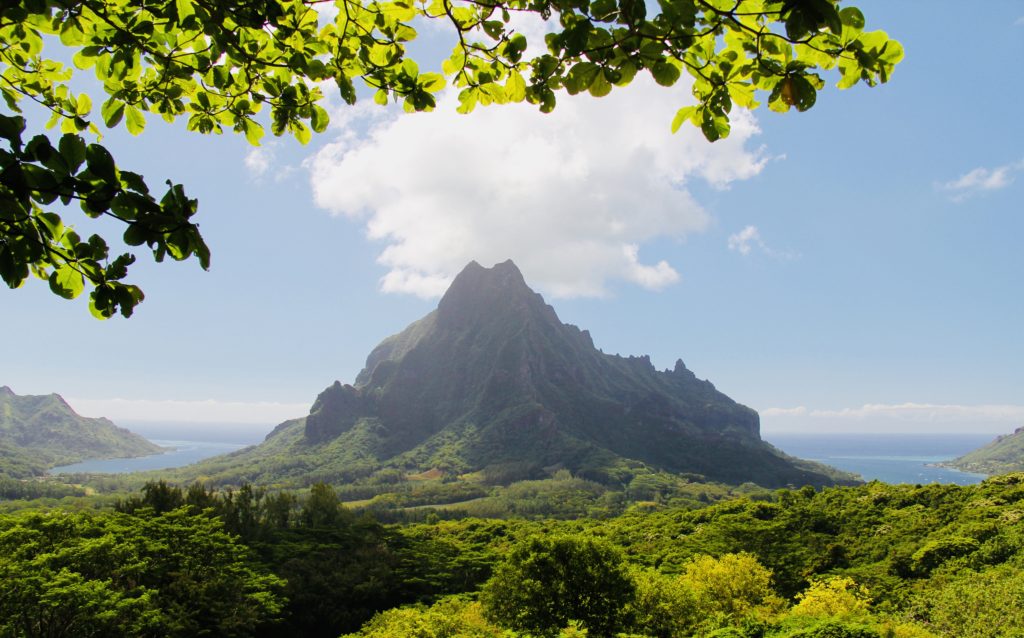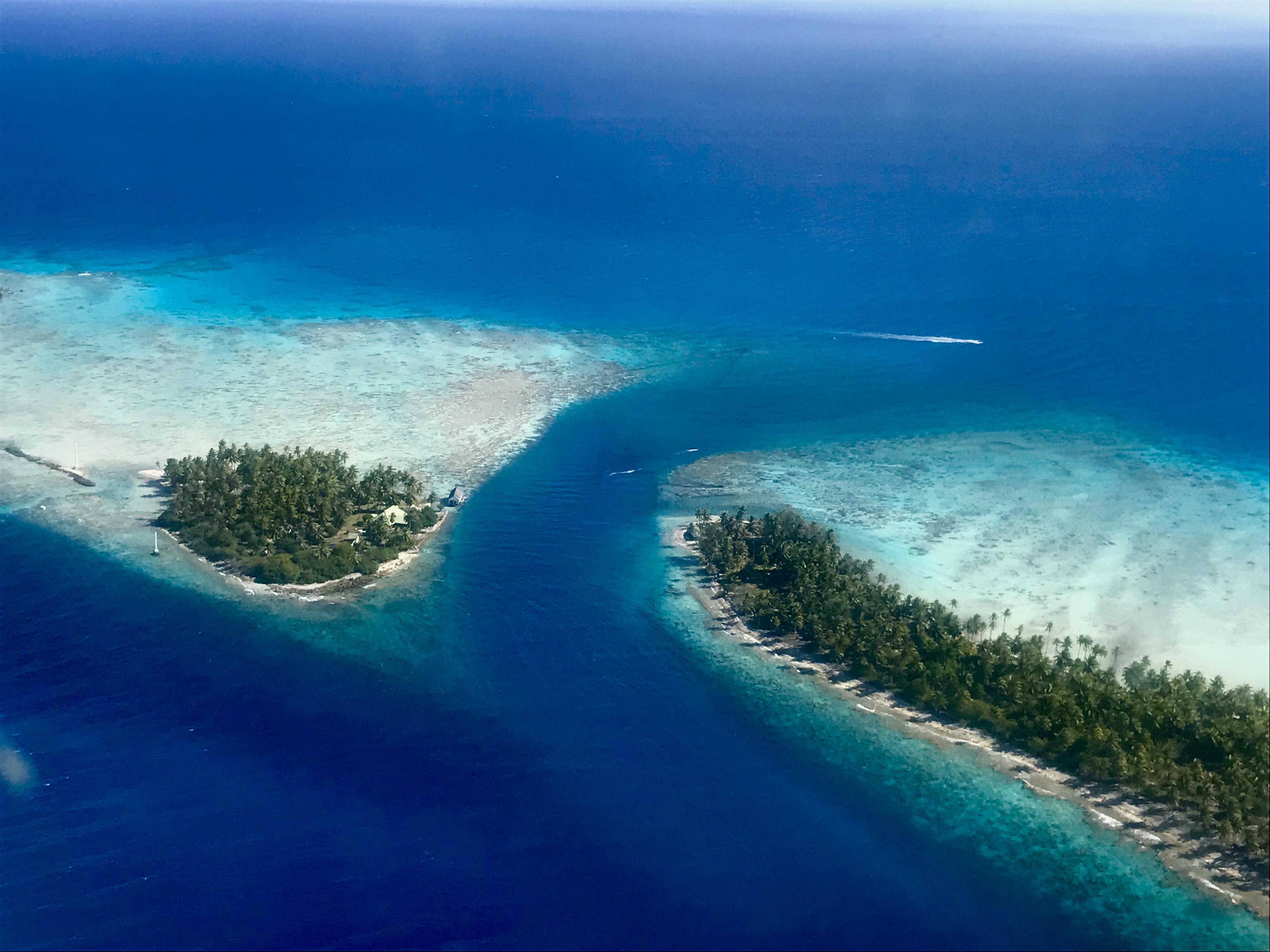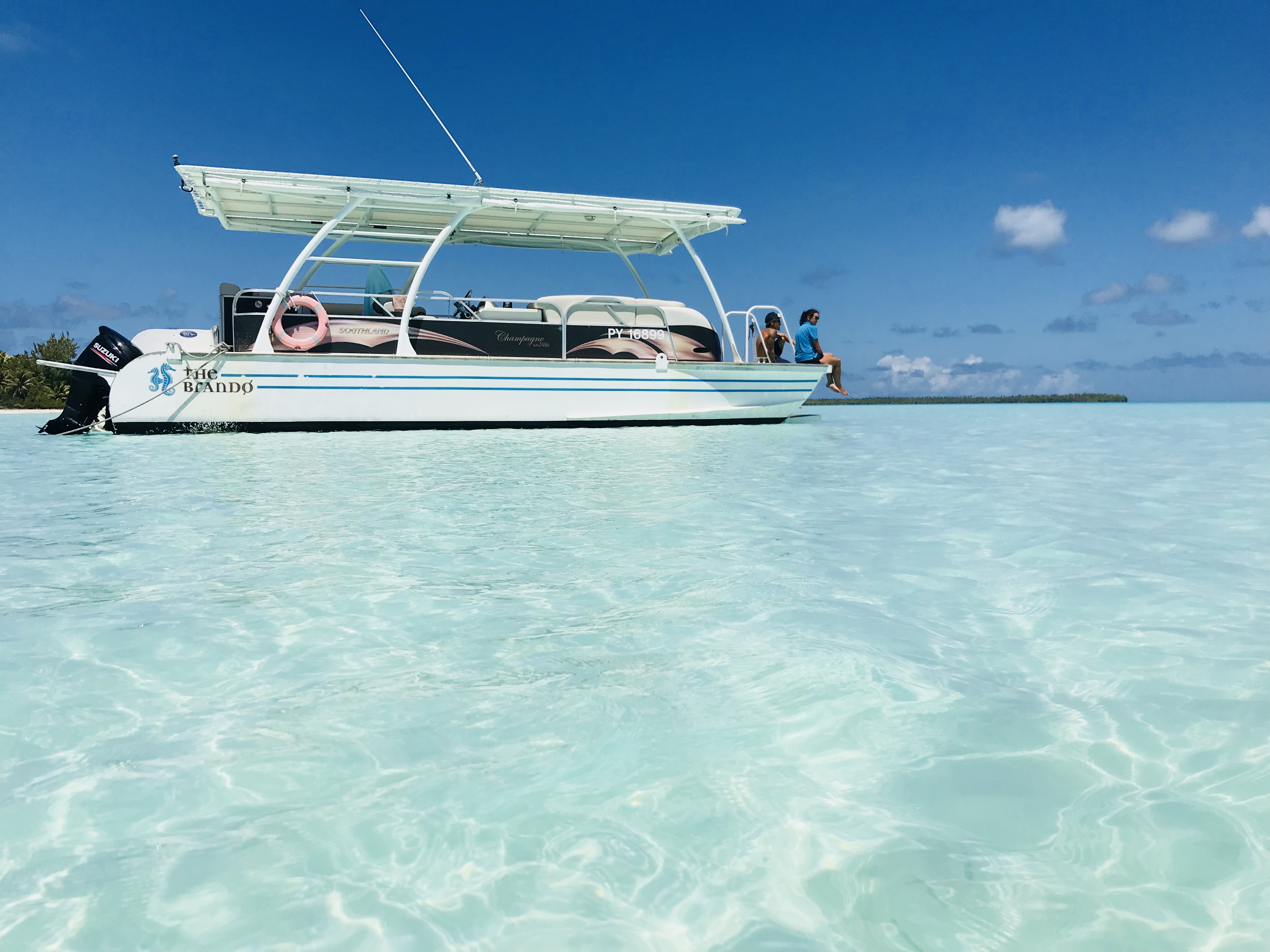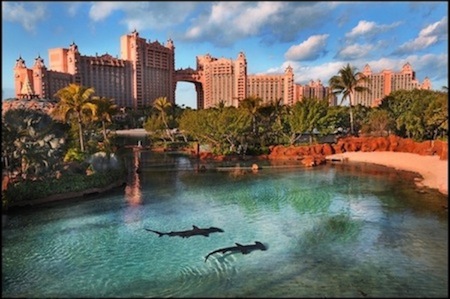Paradise in the Pacific: FRENCH POLYNESIA
By Marlise Kast-Myers
French Polynesia sounded exotic, tropical, and romantic—all necessary ingredients for an idyllic honeymoon. But I’d been married for nearly a decade, and this was my solo adventure, a gift to myself while my husband toured Colorado’s Backcountry Discovery Route.
We both have our passions; mine being surfing and all things water, while he craves motorbikes and off-roading adventures. With the calendar before us, I set my eyes on Tahiti and he on Colorado.
There was little I knew about the destination, other than I could put my French to use in a place known for epic waves, and of course Bora Bora. With 118 islands and five archipelagoes, this French collective beckoned me to just about every island, except Bora Bora. I was on a quest for the uncommon, the cultural, and the fluid core of French Polynesia.
From San Diego, I drove to LAX and caught a direct 8-hour flight to Tahiti on Air Tahiti Nui. They have daily non-stop service between LAX and Tahiti’s International Airport near the capital of Papeete.
With a row to myself, I sprawled out until awakened by a flight attendant, her hair pulled back and adorned with a gardenia. This was not a fashion statement but rather a tradition, something I soon found commonplace in lei necklaces, floral crowns, and fragrant petal baths.
Passengers awaiting their stamp of entry were serenaded by ukuleles, drums, and flutes upstaged by the Tahitian dance, Ori Tahiti. It’s like hula with less arms and more hips.
Outside the airport, the sweet perfume of leis hit me like a wave. Surrounded by affectionate couples, I was in honeymooner’s haven, a place I set out to redefine as an adventure-seekers utopia.
It was midnight (3:00 AM my time) when I arrived at Manava Suite Resort Tahiti, located 10 minutes from the airport and 20 from the harbor. Rumor had it the hotel fronted Ta’apuna surf spot. This shallow, reef break is considered “baby Teahupo’o,” the heaviest wave in the world.
From the infinity pool, I watched as surfers paddled 20 minutes into the line up—the sky streaked with pinks and purples over Mo’orea, the first of four islands on my itinerary.
Within an hour I was aboard Poe Maia Catamaran for an overnight sailing trip around Mo’orea. The transportation seemed fitting since Polynesians first developed catamarans in 1500 BCE.
Just 28 nautical miles from Tahiti, Mo’orea rises from the ocean like a cathedral, with dramatic green spires crowned by billowing darkness. Skirting the shores are thatched huts draped in bougainvillea and hibiscus.
Outrigger canoes cut through the water as dolphins played in our wake. The rhythm of the waves took over and before long, I found myself laying facedown on the catamaran net. Mesmerized by the water’s transparency, I soaked in the hues of blues, inviting me into a world of boundless brilliance.
Only the motion of the swell caused me to stir, announcing our arrival to Haapiti. At this surf spot off Mo’orea, I was in for an 8-ft day with steep drops and a river-like current that longed to pull me out to sea.
The 30-minute paddle to the break was exhausting, leaving me with Gumby-like arms and humbling wipeouts. It certainly wasn’t the best session of my life, but it might have been the most breathtaking.
Jagged mountains and rainforest slopes crescendoed to the 3,960-ft volcanic summit of Mount Tohivea. From the top are views of Mont Routui, two bays, and three peninsulas.
Beyond surfing and hiking, catamaran passengers can pick from pearl farms, vanilla fields, coffee plantations, and pineapple-wine “vineyards”. I could have even left with a Polynesian tattoo in the birthplace of this sacred social marker.
Having absorbed enough pain for one day, I opted for a Hinano beer. My captain insisted on preparing the national dish, Poisson cru (“ia ota” in Tahitian). This version of Polynesian ceviche is marinated with limejuice and coconut milk, and tossed with vegetables.
That night we anchored in Ōpūnohu Bay, not far from Hilton Moorea Lagoon Resort. The location made it easy to arrive by dingy to the overwater-bungalow hotel.
Last year, Tahiti celebrated its 50th anniversary of the first luxury hut on stilts. Now was my chance to experience these iconic symbols of paradise, perched over clear waters and shaded by palapas. Hilton Moorea didn’t disappoint, with a string of glass-bottom bungalows connected by wooden walkways; below was a crystal lagoon where exotic fish darted between pylons and coral gardens.
At check-in, I was greeted by Amo, owner of Enjoy Boat Tours Moorea. I signed up for the 4-hour whale-watching tour (June-October), which lasted six hours—not for lack of wildlife, but rather for its overabundance.
Like Moby Dick minus the harpoon, we were on the hunt for these magical creatures. And then, there it was, our first whale’s tail slapping the horizon with vigor. Every camera went into paparazzi mode, thrilled by the wonder before us.
If only we knew.
Over the next five hours, we saw over 60 humpback whales, and each time, I jumped overboard to swim with the beasts. In our group of 10, just four of us snorkeled with these bus-sized mammals.
Our guide Amo was beside himself, especially when we encountered a pod of pilot whales. He warned us that, on occasion, a whitetip shark might be lurking near the baby whales.
“Stay together, and don’t panic,” he said adjusting his snorkel.
The moment my mask dipped below the surface, I saw not one, but 12 sharks approaching. Amo immediately huddled our group, and ordered the captain to drop the ladder.
On board, we couldn’t contain our excitement, a muddle of joy and fear, as we witnessed an orchestrated-like dance of breaching whales and circling sharks. Sitting alone on the bow of the boat, I was overwhelmed with gratitude that nature had gifted us with an unparalleled moment in time.
Back on the shores of Mo’orea, locals were celebrating Sunday—splashing in the bay, swaying in hammocks, and barbequing on grills propped over the water. Leftovers were handfed to manta rays, or wrapped in foil for passing boats. Residents mingled with tourists as if one big family, smiling with no hidden agenda other than to share joy.
After kayaking around Hilton, I boarded Terevau ferry back to Tahiti. The largest island in French Polynesia, Tahiti is the gateway to surrounding islands . . . and so much more. Its mountainous interior boasts streams, valleys, and waterfalls, and the bustling capital is buzzing with markets, music, dance, art, and culture. It’s also home to Arahurahu marae (temple), a sacred meeting place for ancient ceremonies and celebrations.
I caught an hour flight to Tikehau, one of the 77 atolls that make up Tuamotu Islands. For anyone interested in diving, Tikehau’s transparent world is a must.
Set on Motu Tiano islet, Tikehau Pearl Beach Resort served as the ideal base for diving excursions. Thirteen Polynesian villas dot a coconut grove, fringed by pink-sand beaches. Another 24 overwater bungalows push off the mainland.
Snorkeling and kayaking are onsite attractions, but most people book diving trips with Tikehau Plongee. Expect to see tuna, barracuda, and manta rays up to 13ft. Kneeling on the ocean floor, I leaned back as the belly of a manta ray skimmed my forehead.
Saving the best for last, I ended my trip at Tetiaroa, an atoll of 12 islands centered by a sparkling lagoon. Only one is developed by The Brando, named for Marlon Brando who fell in love with Tetiaroa while filming Mutiny on the Bounty. Passionate about preserving the island’s biodiversity, the actor bought the atoll in 1967 and turned it into a model for sustainability.
Officially opened in 2014, The Brando is considered the greenest resort in the South Pacific. A 20-minute flight from Tahiti, it’s like the Where’s Waldo of resorts. All 35 villas are tucked behind gardens on white-sandy beaches frequented by exotic birds. This year they released a record-breaking 25,000 green turtles.
Guests can navigate the 2-mile island by bike or golf cart, or spend the day in their villas complete with plunge pools, media rooms, jungle baths, and windows galore.
Included in the rate are meals, drinks, plus one daily activity and spa treatment. For an energy boost, the Peue Blend massage combines Shiatsu, yoga, and Thai into one out-of-body-into-mind experience. Activities run the gamut of tennis, biking, snorkeling, fishing, and beyond.
I chose the behind-the-scenes Green Tour, and the Tetiaroa Ultimate Tour of the atoll. Led by the experienced and fabulous naturalist guide, “Tihoni,” he has a heart for the islands that runs deep. He pointed out the dove-like common tern, the red-footed booby, strawberry crabs, and the 45 hives of resident bees that produce 827 pounds of honey every two months.
Never had I experienced such splendor, with shades of turquoise I didn’t know existed. For the grand finale, we anchored in the still lagoon, waded in knee-deep water, and pinched the sugary sand between our toes. I told Tihoni it would be hard to describe a place such as this.
He told me it’s more about “her” energy and her desire to shine for those who loved her back. I gave him a puzzled look.
“It’s a she,” Tihoni explained. “The islands I mean, she’s female.”
I smiled and asked if she might feel loved by me.
“Well, let’s just say I’ve lived in French Polynesia all my life, and today, she’s showing off for you.”
Marlise Kast-Myers is an award winning travel writer who lives in Valley Center.

